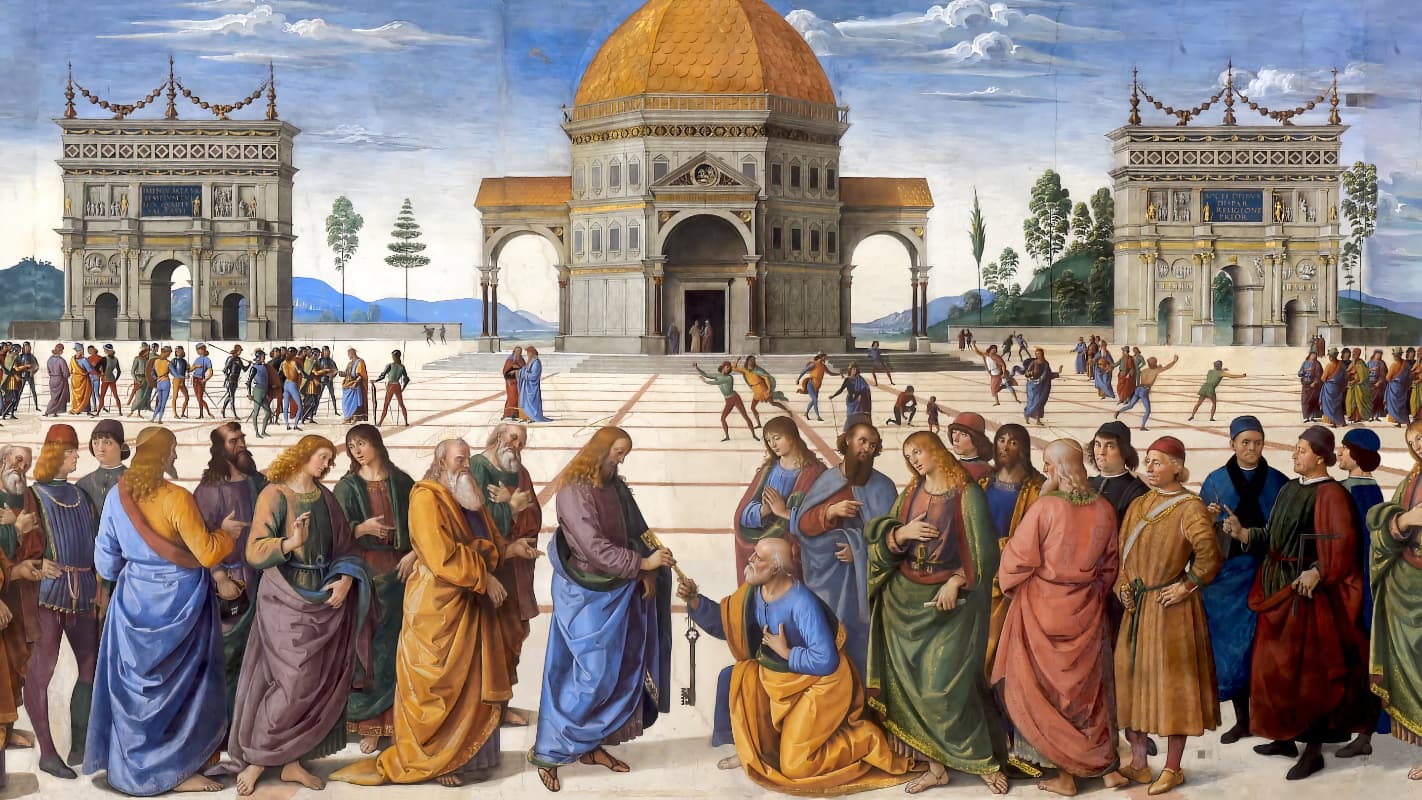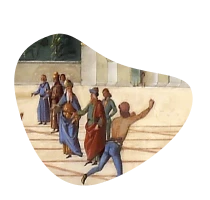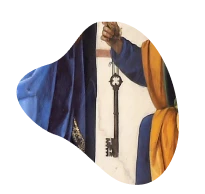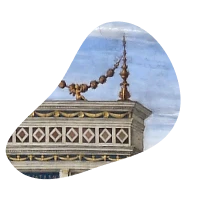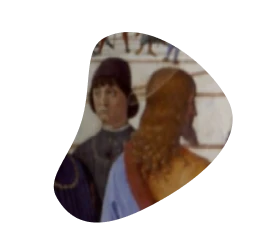Last episode, composer and pianist Karim Said—who wrote the original music for this podcast—explained to us how Josquin’s Missa La sol fa re mi was an obsessive way of telling his Milanese employer, Cardinal Ascanio Sforza, that it was time to pay his musicians. But is the story true? There is another anecdote attributing the mass to Josquin’s Roman days, suggesting that he wrote it as a dig at Cem, the Ottoman Sultan’s brother, who was being held hostage by the Pope. Cem, so the story goes, was supposed to convert to Christianity and help out in the Crusades; though he may have implied that he was considering it, he never did. Was Josquin giving him a forcible musical reminder of the actions expected of him? Karim Said prefers to think not.
When Josquin arrived in Rome in the 1490s, the city looked quite different from the glorious capital of Christianity that the Renaissance popes of the early 16th century were about to (re)build and that might come to our minds first. After the decline of the Roman Empire, Willem explains, the Eternal City had shrunk into somewhat of a smallish town with loads of crumbling Roman ruins. At the time Josquin joined the choir of the Sistine Chapel, the papal state, both as a religious and a secular authority, was just about beginning to consolidate its political and economic power. When plans for the magnificent redesign of the St Peter Cathedral were starting to materialize, he had long left the city again.

When Willem and I arrive in Rome in 2020, the city is in hard lockdown. However, Laura Carbonara, Roman art historian and tour guide, still manages to wangle us into the Vatican Library. There we are able to examine some of the earliest surviving manuscripts of Josquin’s work. Musicologist Guido Zaccagnini expounds on his theory that Josquin enjoyed the good life during his time in the Immortal City. But a job in the choir of the Sistine Chapel was not for the faint-hearted—though documents from the time attest to the fact that rehearsals often ended in revelry at the local pub. Luca Della Libera, another Roman musicologist, takes us through the churches of Rome describing their musical history. He tells us about how stringent the rules for Sistine Chapel singers were: a member of the choir, the “puntatore,” would mark down each wrong note sung, and individual singers would have their pay docked for every mistake at the end of the month.
People may have come to Rome for musical reasons, says Zaccagnini, but they stayed on for the good life. As he tells it, there was a kind of joyful chaos in the growing city. Palestrina made his money not with composition but with selling wine; Josquin may well have had his own businesses on the side. He would probably have lived outside the Vatican, in one of the many hostels for Papal employees. While most people assume that because there is no record of Josquin ever having been married, he lived a celibate, perhaps monastic life, Zaccagnini likes to imagine that he would have had a girlfriend and perhaps even children in Rome—why not?—leaving them behind when the Duke of Ferrara summoned him.

A third Roman musicologist, Franco Piperno, says that he believes that Josquin must have been politically astute, and might even have worked as a spy; it was not unheard of for singers to have that kind of double life. In any case, Piperno said, the pay was generous and the life comfortable.
Inextricably linked with Josquin’s time in Rome are his “L’homme armé” masses, two very different settings based on a popular song about war. “Fear the armed man,” the song goes. “Word has gone out that everyone should arm himself with a haubregon of iron”—in other words, put on your chain mail vest, you might be next. Guido Zaccagnini says that you cannot talk about Josquin in Rome without talking about L’homme armé. In its complex contrapuntal treatment of the song, the mass sets the bar stratospherically high for all the composers who would come after.
Tuin de Vries’s novel about Josquin suggests that the pious Belgian would have been deeply shocked by the revelry and corruption that characterized Rome under Pope Alexander VI, a member of the Borgia family who fathered a number of children and helped them into advantageous positions—which gave us the word “nepotism”. But a surprising number of people we met suggested that the Borgias had been the victims of bad press at best, fake news at worst—written by their rivals and blown out of proportion in hindsight.

What seems certain is that Josquin enjoyed a comfortable life as a member of the Sistine Chapel choir, was generously paid and found himself in the company of top professionals—and arguably wrote some of his best music there. So what lead him on to Florence and Ferrara? What was his relationship with the wild-eyed reformer Girolamo Savonarola? Was he really a believer, or religion for him a matter of pragmatic politicking? We’ll find out in the next episode.
**Master of the Notes** is a Max Music Media production commissioned by the Pierre Boulez Saal and written by Shirley Apthorp and Willem Bruls.
Born in South Africa, Shirley Apthorp grew up in Australia and studied music at the University of Tasmania. Since 1996, she has lived in Berlin, writing about music for numerous international publications including the Financial Times (UK), Bloomberg (USA), and Opernwelt. Her work has been published in the United Kingdom, the U.S., Australia, Germany, Austria, Japan, Brazil, the Netherlands, Norway, and South Africa. In 2010, she founded the award-winning non-profit organization Umculo which supports social development through music theater in South Africa. Shirley Apthorp received the Classical:NEXT Innovation Award in 2019.
Willem Bruls holds degrees in literature and history of art and works as dramaturge, author, music critic, and librettist. He has published extensively on a wide range of subjects, including most notably a study of Wagner’s Ring cycle and orientalism in opera. He collaborated with directors such as Guy Cassiers and Pierre Audi and directed several music theater productions himself. He wrote a stage adaptation of Pasolini’s Teorema for the Ruhrtriennale Festival and has given workshops on contemporary music theater, libretto writing, and youth theater throughout Europe. He serves as an advisor for the performing arts to the Dutch Arts Council.
Credits
Original Music for this podcast was composed by Karim Said and recorded by Angela Boutros, Elias Aboud, Roshanak Rafani, and Joseph Protze of the Barenboim-Said Akademie.
Excerpts from Josquin des Prez, Missa La sol fa re mi and Missa L’homme armé super voces musicales, recorded by Peter Phillips & The Tallis Scholars © Gimell Records.
In case of violation of copyright, we kindly ask the rightsholders to contact us.
